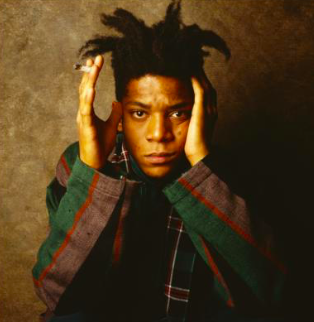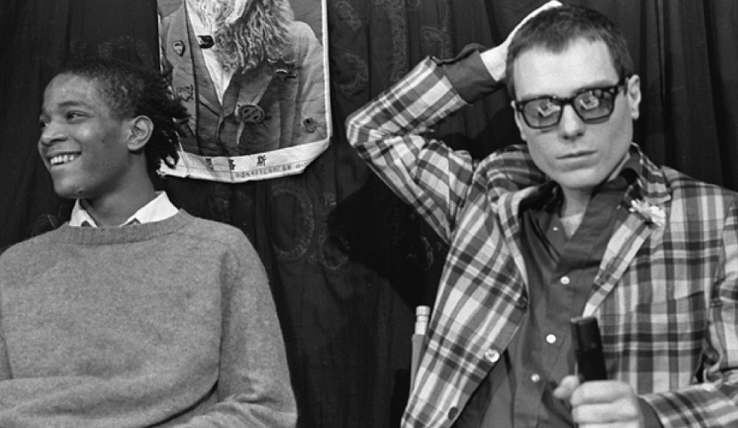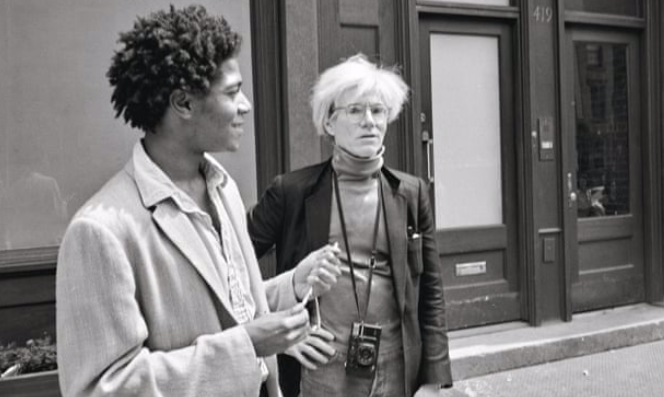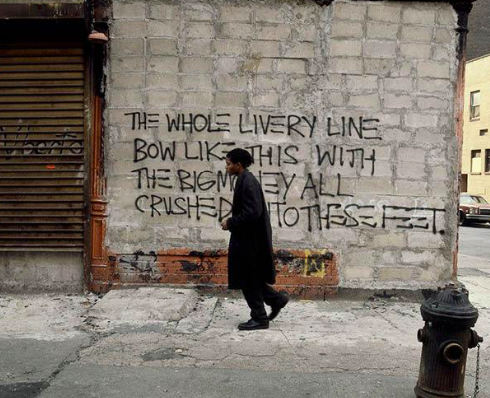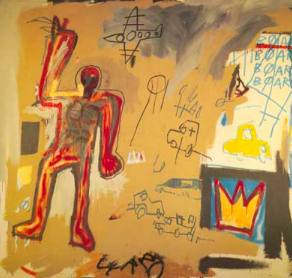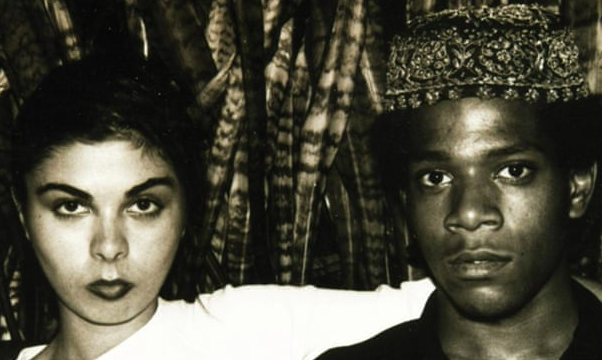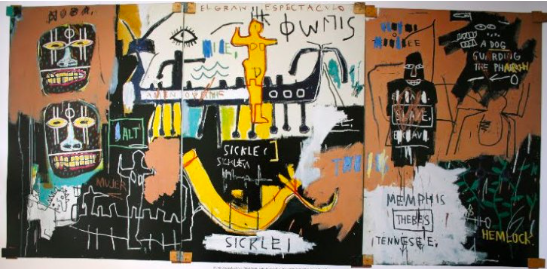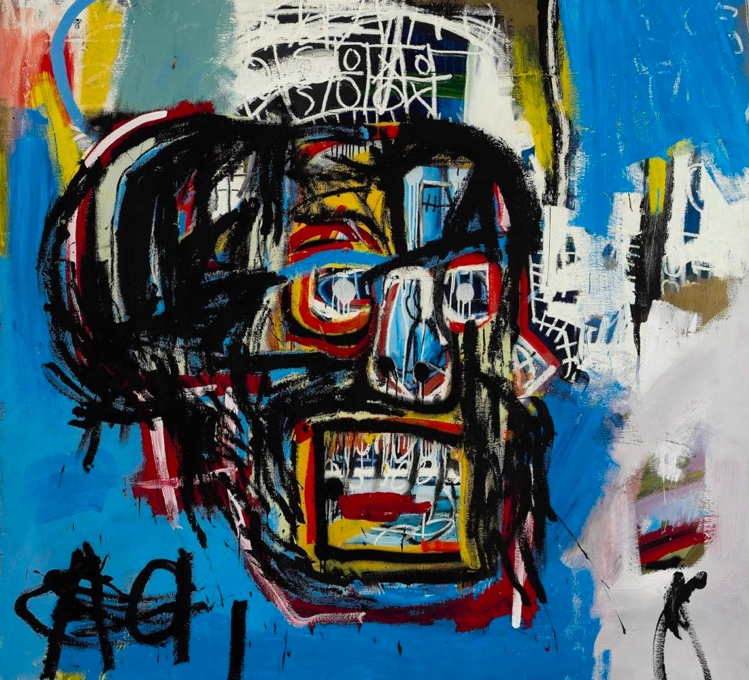Basquiat and Diaz eventually retired the title, and "SAMO© is dead" began to appear around New York City, but not before their mysterious work led Basquiat to appear on TV Party as Mr. Samo.
From this early in his career, Basquiat was a legend. Nobody thought that SAMO© could have been a young black man; the art world was still caught up in the idea that an artist that clever had to be a white man. And boy, were they wrong!
This was not the only time that Basquiat took the art world by surprise. Though SAMO© brought him fame, graffiti art was no way to make money. To support himself, Basquiat sold t-shirts and postcards, mainly to his friends - until one day he met the legendary Andy Warhol. Warhol knew the young graffiti artist had the skills to make it, and he began to buy his work and mentor him. The two were publicly known as friends. In 1980, Basquiat starred in a Glenn O'Brien film, Downtown 81. During the making of this film, Basquiat lived in the production office and was given his first canvas, on which he created "Untitled": Red Man.
That same year, Jean-Michel was featured in the first radical art show of the 1980s, Times Square Show. Coincidentally, this was also Basquiat's first art show, and this was the moment he became the star of the art world. People lined up and down the block just to see his work. One of these excited individuals was art dealer, Annina Nosei, who invited Basquiat to another show called Public Address in 1981.
Basquiat's work was unique in the way he referenced other artists' work. He was very aware of art history, and he was influenced by music, books, and films. He once described these reimagined works as "someone's idea going through [my] new mind." Basquiat married Pop art and Neo-expressionism in a celebration of black culture. His work featured poetry that spoke about racism, slavery, and black history. Motifs in his work included heads and skulls, heroes and saints, and nods to his diverse heritage. In his career, Basquiat completed about 600 paintings, 1500 drawings, and a variety of other pieces, including sculptures and multimedia designs.
"Basquiat adeptly reworked Neo-expressionism's clichéd language of gesture, freedom, and angst and redirected Pop art's strategy of appropriation to produce a body of work that at times celebrated black culture and history but also revealed its complexity and contradictions." Jean-Michel Basquiat was extremely successful, but unfortunately, he turned to drugs as a way of coping with his fame. His use only got worse following the death of Andy Warhol in 1987. As he began to gravitate toward his old friends, Basquiat realized fame wasn't all he wanted it to be. He was isolated, and he wanted his old life back.
In August 1988, at the age of 27, Basquiat died of a heroin overdose, but his legacy is much greater than he ever imagined it could be. His life has been celebrated through film, literature, and music, and his work continues to be highlighted within the fashion industry. Jean-Michel Basquiat challenged the status quo, influencing the world of modern art today. He had an instinctual need to create. Art existed at the center of his being. |
“At that point, [an artist] was somebody who could draw, but my ideas have changed since then. Now I see an artist as something a lot broader than that.”
- Jean-Michel Basquiat
